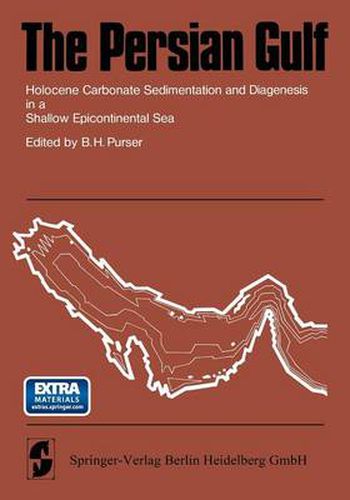Readings Newsletter
Become a Readings Member to make your shopping experience even easier.
Sign in or sign up for free!
You’re not far away from qualifying for FREE standard shipping within Australia
You’ve qualified for FREE standard shipping within Australia
The cart is loading…






This title is printed to order. This book may have been self-published. If so, we cannot guarantee the quality of the content. In the main most books will have gone through the editing process however some may not. We therefore suggest that you be aware of this before ordering this book. If in doubt check either the author or publisher’s details as we are unable to accept any returns unless they are faulty. Please contact us if you have any questions.
This volume, although not an integrated synthesis, treats most aspects of Holocene sedimenta tion and diagenesis in the Persian Gulf, grouping 22 contributions under a single cover and in one language. Because these sediments and diagenetic minerals are comparable to those existing in many ancient sedimentary basins, their appraisal should be of value to the enlarging group of workers who interpret ancient sedimentary rocks. The essential morphological, climatic and oceanographic factors determining Holocene sedimen tation and diagenesis in the Persian Gulf are summarized in the introductory article by PURSER and SEIBOLD. These environmental controls and the overall morphology of the Persian Gulf have much in common with Shark Bay, Western Australia, described by LOGAN et al. (1970). On the other hand, the Persian Gulf is markedly different from the better known Florida and Bahamian prov inces; the floor of the Persian Gulf is gently inclined from continental shoreline to bathymetric axis (80-100 m); the Bahamian province, on the other hand, is horizontal and extremely shallow (2-10 m), with very sharply defined shelf edges surrounded by deep oceanic waters. These contrast ing architectural styles are related to different tectonic frames.
$9.00 standard shipping within Australia
FREE standard shipping within Australia for orders over $100.00
Express & International shipping calculated at checkout
This title is printed to order. This book may have been self-published. If so, we cannot guarantee the quality of the content. In the main most books will have gone through the editing process however some may not. We therefore suggest that you be aware of this before ordering this book. If in doubt check either the author or publisher’s details as we are unable to accept any returns unless they are faulty. Please contact us if you have any questions.
This volume, although not an integrated synthesis, treats most aspects of Holocene sedimenta tion and diagenesis in the Persian Gulf, grouping 22 contributions under a single cover and in one language. Because these sediments and diagenetic minerals are comparable to those existing in many ancient sedimentary basins, their appraisal should be of value to the enlarging group of workers who interpret ancient sedimentary rocks. The essential morphological, climatic and oceanographic factors determining Holocene sedimen tation and diagenesis in the Persian Gulf are summarized in the introductory article by PURSER and SEIBOLD. These environmental controls and the overall morphology of the Persian Gulf have much in common with Shark Bay, Western Australia, described by LOGAN et al. (1970). On the other hand, the Persian Gulf is markedly different from the better known Florida and Bahamian prov inces; the floor of the Persian Gulf is gently inclined from continental shoreline to bathymetric axis (80-100 m); the Bahamian province, on the other hand, is horizontal and extremely shallow (2-10 m), with very sharply defined shelf edges surrounded by deep oceanic waters. These contrast ing architectural styles are related to different tectonic frames.